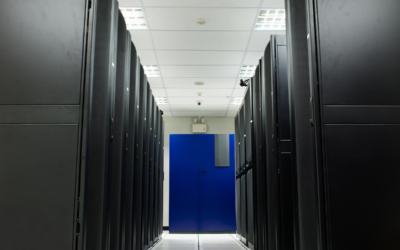The Increasing Need for Remote Monitoring, Management, and Maintenance – Part 216 min read

This is the second installment in a 2-part series. To read part 1, click here.
It is remarkable how reliable and resilient digital infrastructure has proven to be during the global pandemic, despite significant growth in usage and restrictions imposed on travel, site access, and maintenance activities. This COVID spotlight begins to question the need for the traditional 24×365 staffing models currently considered standard. Lessons and experience gained in the current crisis can inform the models needed for remote unmanned Edge sites as dependency on these sites increases.
COVID Restrictions
To support this, it is certainly the case that a well designed and built data center has an increasingly low risk of failure, so a permanent team of engineers based on site may not be necessary. After all, one of the biggest overheads for data center operators are 24×365 site engineering teams.
COVID restrictions have increasingly shown that these may not be necessary, so long as the right monitoring and management tools are available. This is also exactly what we need to effectively and reliably manage remote dark sites as would normally be associated with an Edge deployment. The typical Edge data center will be unstaffed and follow a dark site operating model with a smaller footprint than traditional core data centers. COVID has demonstrated that even large sites can be reliably operated with restricted access and reduced personnel as proved by the resilience of our digital infrastructure through a very difficult period.
Predictive Maintenance and Management
Without full time engineers on site, detecting potential problems simply by being there and walking the site (feeling increased temperature in certain areas for instance) is no longer an option. New operating models and predictive maintenance techniques need to be applied to ensure operational reliability, in addition to the standard preventative maintenance plans. However, predictive maintenance can really only be successfully deployed if the correct level of monitoring is available that also has the insight, trending, and analytical capabilities which allow for reliable prediction of failure or impending capacity constraints. This is especially important in unmanned remote sites where there may be a significant delay in responding to a problem and getting an engineer on the scene.
Site visits will still need to be performed but with greater purpose. A range of planned activities, depth of knowledge, and insight based on far more effective data gathering, analysis, and accuracy will be required.
These systems need to be so much more than an enhanced Building Management System (BMS). Rather than merely offering alerts or allowing the changing of set-points based on human calculation or experience, these systems require the intelligence to predict issues and provide recommendations and solutions. For example, offering the correct set-point values rather than trying (typically unsuccessfully) to balance them manually based on limited information.
Remote Access
As well as being more than a simple BMS, new monitoring and management systems need to overcome the difficulties associated with using ‘embedded’ software systems remotely (due to security concerns, limited functionality, and lack of integration (and age) of those incumbent systems). BMS and other types of traditional systems are typically wired into a network and often need expensive and cumbersome local client software to offer remote access. Whereas the newer, more lightweight and recently developed software platforms can be accessed via simple browsers and subject to security restrictions typically applied to this type of access. These newer systems can also be air gapped from the onsite systems to alleviate security concerns, and are available anytime, even if the facility is physically inaccessible due to COVID restrictions, distance, travel disruption, etc.
These tools offer genuine ROI and minimal management resource overhead while solving problems rather than merely alerting. Despite the reduced cost and overhead, these remote monitoring and management solutions are still able to offer a consistent interface across the entire estate, offering the same level of granularity from small computer rooms to the largest data centers. Thus allowing fewer people to manage far more, even at a distance.
The Bottom Line
Remote monitoring and management tools with the attributes described in these articles are also a catalyst in getting all the stakeholders to work together around core business processes involving people, facilities, and IT infrastructure. The benefits include reduced operating costs, improved utilization of deployed resources and assets, increased reliability, improved energy savings, and deferment of capital costs.
Real-time monitoring, data-driven optimization.
Immersive software, innovative sensors and expert thermal services to monitor,
manage, and maximize the power and cooling infrastructure for critical
data center environments.
Real-time monitoring, data-driven optimization.
Immersive software, innovative sensors and expert thermal services to monitor, manage, and maximize the power and cooling infrastructure for critical data center environments.

Mark Acton
Independent Consultant | Non Executive Director, EkkoSense
With over 25 years of experience in the Data Centre sector industry, Mark has been a specialist in the field of Data Centre Operations for over 20 years, concentrating on the delivery of business critical services from highly reliable, world class Data Centres having 24x365 availability expectations. This has included consultancy and technical advice as well as senior management roles responsible for service delivery and both strategic and operational management within the industry. A Technical Operations Manager with extensive international experience and solid technical skills covering Data Centre Facilities Design, IT and Facilities Operational Management with Technical Consulting.
A regular public speaker, conference host and industry advisor on data centre technical issues, currently acting as consultant and Non-Executive Director for leading data centre operators and solutions developers as well as being involved in International data centre Standards development.







0 Comments